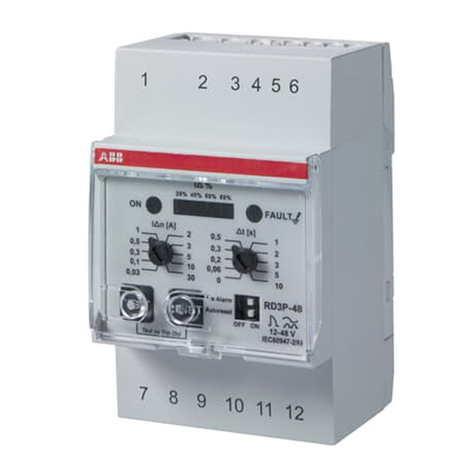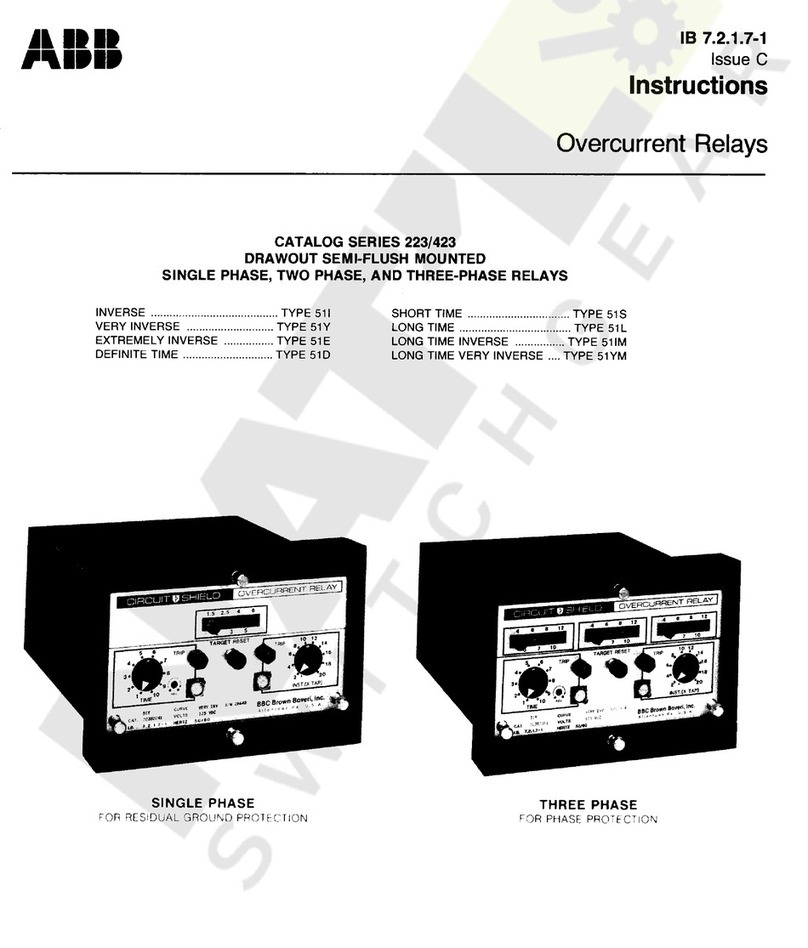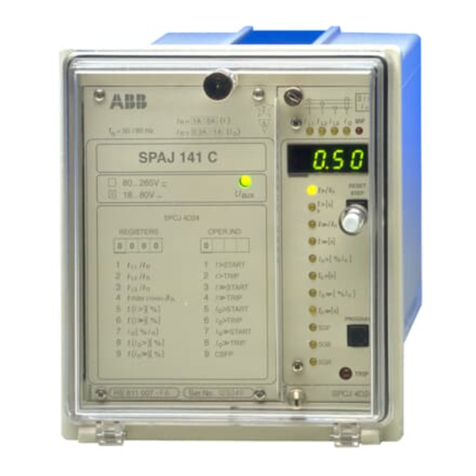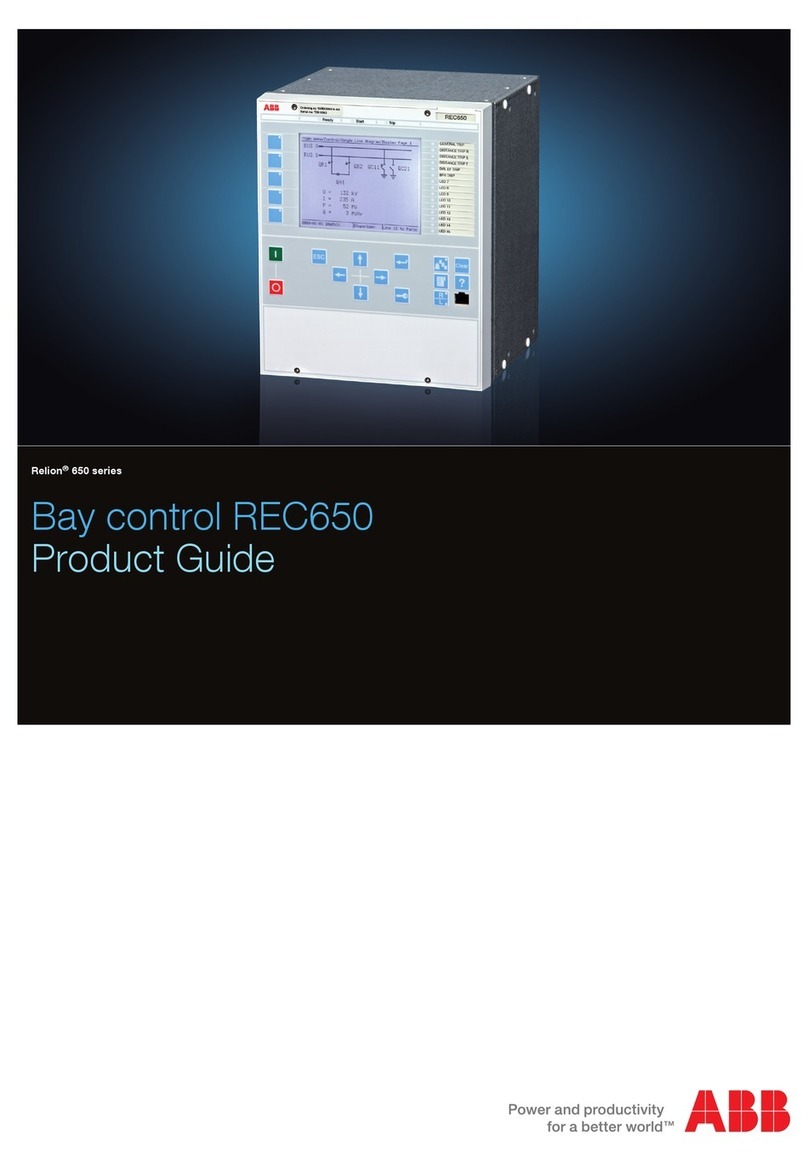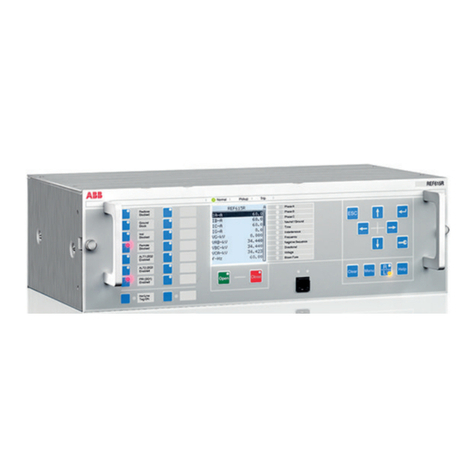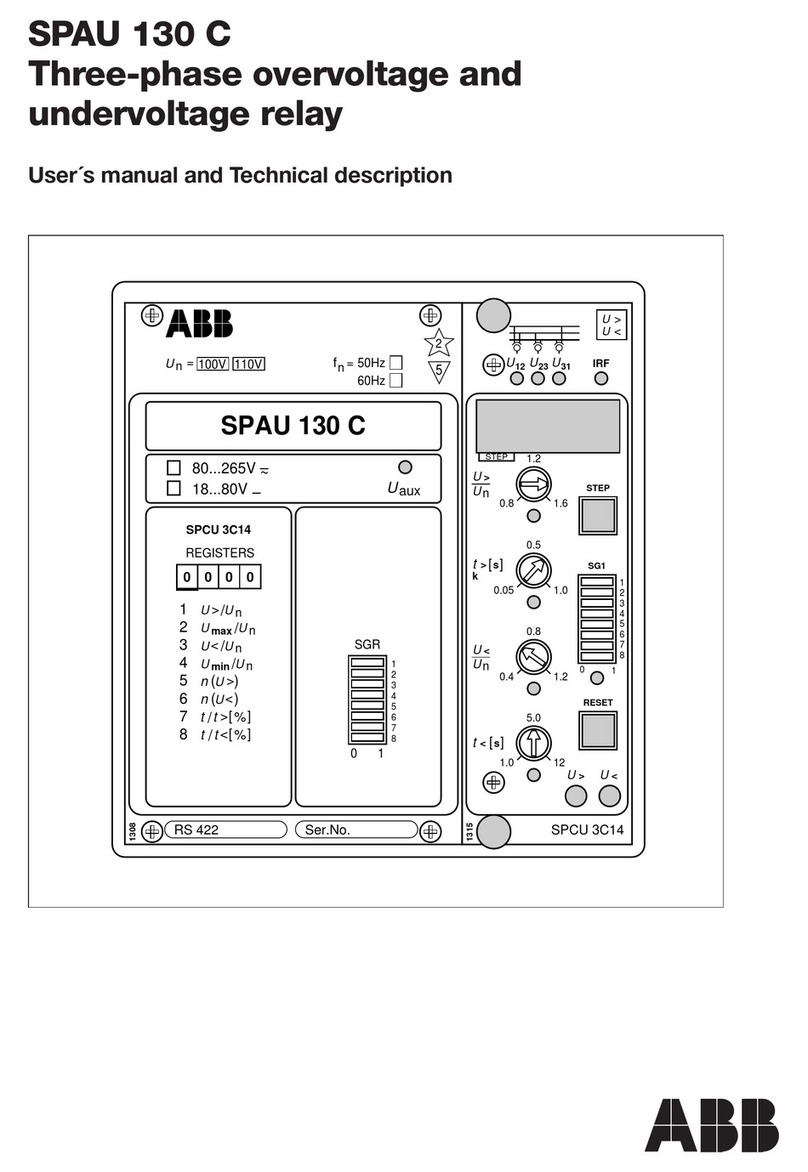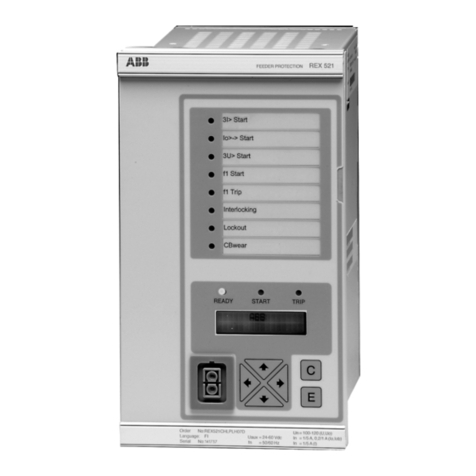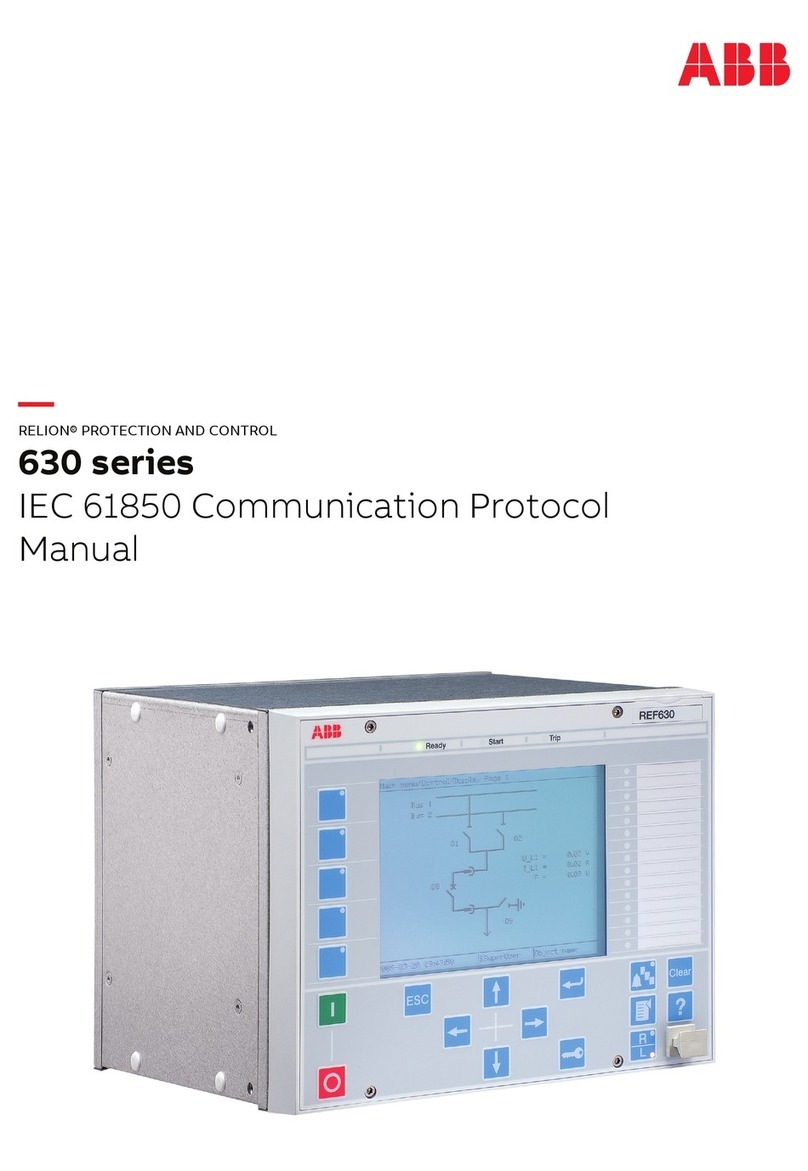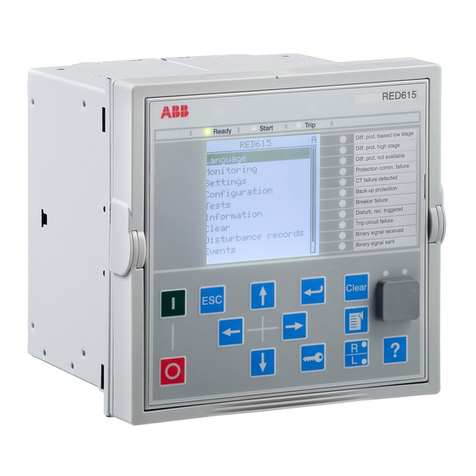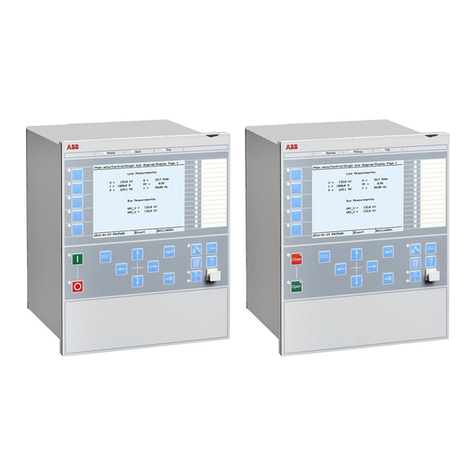
I.L. 41-973.5Q
10
8. ROUTINE MAINTENANCE
!CAUTION
DO NOT make any performance check, calibra-
tion tests, or adjustments while the PM relays are
energized or connected to the pilot-wires, to pre-
vent the possibility of inadvertently causing a
break operation. The PM relays may be removed
from service for testing, without jeopardizing
HCB relay protection, providing that the connec-
tions between the 10 mfd capacitor and the HCB
insulating transformer are not disturbed.
8.1. Contacts
All contacts should be periodically cleaned. A contact
burnisher Style number 182A836H01 is recom-
mended for this purpose. The use of abrasive mate-
rial for cleaning contacts is not recommended
because of the danger of embedding small particles
in the face of the soft silver and thus impairing the
contact.
8.2. Operational Check
In addition to cleaning contacts, it is recommended
that an operational check be performed periodically
by opening and short circuited the pilot-wires, as well
as grounding term at the relay terminals.
NOTE: These pilot-wire faults should not be applied
directly to the pilot-wires when the HCB relays
are in service. It is recommended that the trip
circuits of the PM relays be opened (where trip-
ping is used), to prevent the possibility of inad-
vertently tripping the associated circuit breaker
during testing. If the relays do not perform as
expected, and diode failure is suspected, the
diode tests described in the following section
may be performed.
8.3. Rectifier (Diode) Check (ac relays only)
If there is suspicion of a rectifier (diode) failure, apply
30 volts dc reverse voltage (positive on cathode)
through a 300 ohm resistance to the diode. Measure
the voltage across the diode. If this voltage is not
essentially 30 volts, the diode is short circulated.
Now apply 30 volts dc in the forward direction
through the 300 ohm resistor, and measure the volt-
age across the resistor. If the voltage is not essen-
tially 30 volts, the diode may have a high forward
resistance. If voltage is zero, the diode is open-cir-
cuited.
9. CALIBRATION
If the relay has been dismantled or the calibration
has been disturbed, use the following procedure for
calibration.
(Relays must be tested in the case.)
With the permanent magnet removed, see that the
moving armature floats in the central area of the air-
gap between the poles of the polar unit frame. If nec-
essary, loosen the core screw in the center rear of
the unit and shift the core and contact assembly until
the armature floats. (This can best be done with the
polar unit removed from the relay.) Then retighten the
core screw and replace he permanent magnet with
the dimple (north pole) on the magnet to the left
when viewed from the front.
9.1. Polar Units – General
The following mechanical adjustments are given as a
guide, and some deviation from them may be neces-
sary to obtain proper electrical calibration.
9.1.1. Magnetic Shunt Adjustment
The sensitivity of the polar unit is adjusted by means
of two magnetic, screw-type shunts at the rear of the
unit, as shown in figure 1. These shunt screws are
held in proper adjustment by a flat strip spring across
the back of the polar unit frame, so no locking screws
are required. Looking at the relay, front view, turning
out the right-hand shunt to open the right-hand air
gap decreases the amount of current required to
close the right-hand contact. Conversely, drawing out
the left-hand shunt increases the amount of current
required to close the right-hand contact, or
decreases the amount of current required to close
the left-hand contact (with the proper direction of cur-
rent flow). Also, if a relay trips to the right at the
proper current, the dropout current can be raised by
turning in the right-hand shunt. The two shunt-screw
adjustments are not independent, however, and a
certain amount of trimming adjustment of both shunt
screws is generally necessary to obtain the desired
pickup and dropout calibration.
In general, the farther out the two shunt screws are
turned, the greater the toggle action will be, and as a
result, the lower the dropout current. For the tripping
units (3) of the PM-3, PM-13, and PM-23 relays, tog-
gle action is desirable, with a dropout current around
Courtesy of NationalSwitchgear.com
